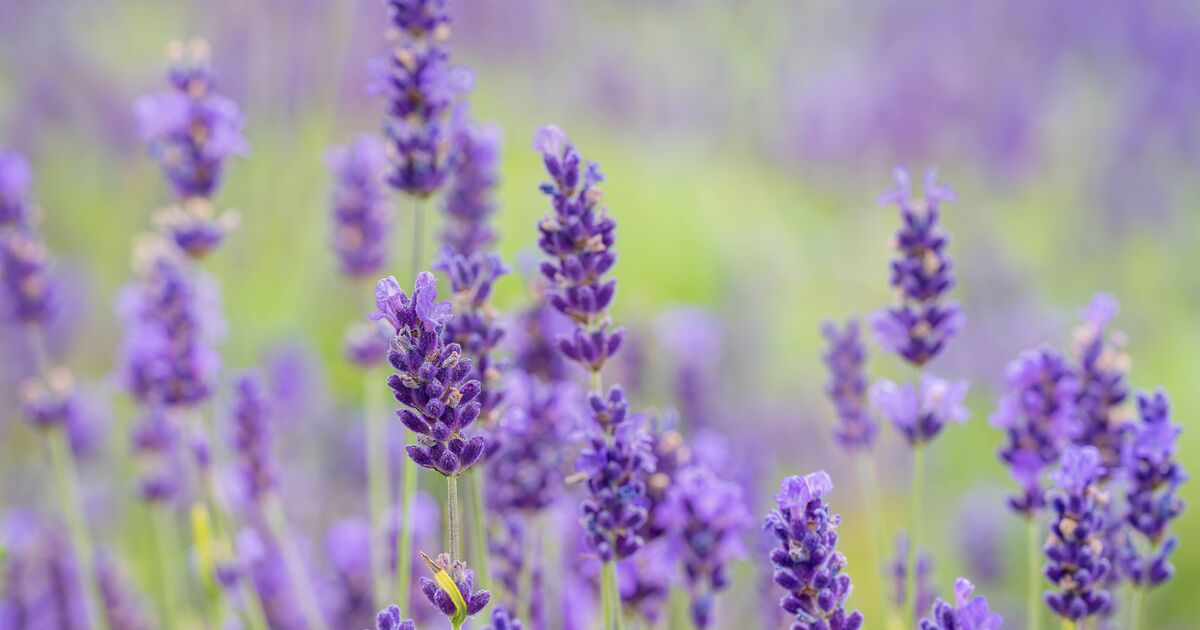People are being advised to complete a crucial task within 4 days, promising that their lavender will ‘flower for years’. Gardeners’ World expert Monty Don has urged individuals to take action this month with the beloved aromatic plant, providing key guidance on what pitfalls to avoid.
In his blog, he informed followers that annual pruning is essential: “To avoid woody, leggy plants, lavender should be pruned every year. The best time to do this is as soon as the flowers start to fade, which, depending on the variety, can be any time between midsummer and the end of August. But do not wait for the seed heads to form or the flowers to turn brown as you want to allow the maximum amount of time for regrowth before winter.
“Cut back hard to a good compact shape but be sure to leave some new shoots on each stem – lavender will often not regrow from bare wood. These new shoots will grow fast and provide an attractive and healthy cover to protect the plant in winter and provide the basis of next year’s display.”
The critical date for this activity is 8th August, also referred to as the 8:8:8 Lavender Rule. This rule suggests pruning English lavender down to 8 inches on the 8th day of the 8th month.
Garden Experts Ashridge explained: “This reminds you to prune Lavender short and early, so the base has time to beef up before Winter, laying the foundation of next year’s tight, bushy, profuse flower display. Without strict pruning, Lavender plants get gappy and the flowers decline.”
How to look after lavender plants.
BBC Gardeners’ World advises that hardy lavenders (Lavandula angustifolia and Lavandula x intermedia types) can withstand temperatures as low as -15°C, thus they can remain in the garden throughout the year. Pruning should occur post-flowering, typically around August or September.
Trim back significantly but avoid cutting into old wood, as the plant seldom regrows from such wood.
Half-hardy lavenders like Lavandula stoechas bloom for an extended season but may not endure the winter. Prune these after their initial burst of flowers have faded, but refrain from pruning any later than early September.
For those cultivating more delicate lavenders, such as Lavandula dentata, only deadhead and prune if the plants start to look unkempt.
How long does lavender last?
Lavenders are not known for their longevity. If pruned properly, hardy varieties can survive for approximately 15 years (up to 20 years in some instances).
Anticipate tender varieties to last around five years.
How long does lavender last?
Lavenders are not known for their longevity. If pruned properly, hardy varieties can survive for approximately 15 years (up to 20 years in some instances).
Anticipate tender varieties to last around five years.
Take semi-ripe lavender cuttings in the late summer. Remove non-flowering shoots, about 10cm long, with a woody base and a tip with new growth.
Strip off some of the lower leaves. Fill plastic pots with peat-free multi-purpose compost, water thoroughly, and then insert the cuttings into the compost.
Approximately 1-2cm of stem should be beneath the surface. Cover pots with a clear plastic bag and position in a light and well-ventilated area – a greenhouse is perfect.
Lavender can often become quite leggy, producing few blooms. This is typically due to insufficient or improper pruning.
Many gardeners merely deadhead hardy varieties, which also results in leggy plants and sparse flowers. If cared for in this manner, the plant’s lifespan will be significantly reduced.
To revive a woody plant, prune in mid-August just above the green shoots and keep your fingers crossed. If new shoots fail to emerge within the following month, it might be more beneficial to start afresh.

